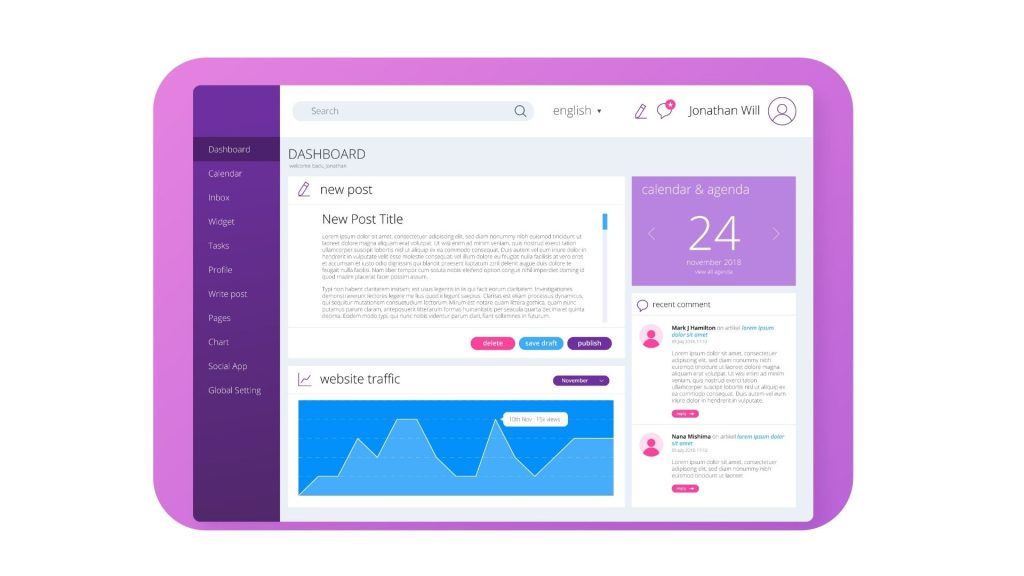
Zara, a content marketer at a small SaaS startup, is bent over her desk, staring at a blank Google Doc. Her Slack pings. It’s Rai.
Rai: Hey Zara! You’ve been staring at that blinking cursor for a while. What’s up
Zara: Ugh, don’t remind me. I’m trying to write our next blog post… but I feel stuck.
Rai: Classic case of content fatigue. Let’s fix that. You don’t need to write harder. You need to write smarter.
Zara: Easy for you to say. You’re an AI.
Rai: Exactly! I’ve helped thousands of creators get unstuck. Let’s take a deep breath and go over a few smart shifts that can turn your writing routine from stressful to strategic
Zara: Go on. I’m all ears
And just like that, Rai begins…
Tip 1: Start with Strategy, Not Sentences

Rai: Before you type a single word, you need a structure. Trust me, outlining first makes the whole process smoother
Zara: So… not just winging it?
Rai: Not unless you enjoy rewriting everything later. Start with a content brief. There are tools like Content Harmony and Frase that can assist you in doing this. And soon, simplecx will make this process even easier. You can sign up for early access here.
Zara: Okay, planning first. Got it.
Rai: Great! Now that you’ve got your structure, the tricky part is research, and for most writers, that’s the biggest time-drain.
Zara opens a fresh doc, outlines her headings, adds a few notes, and smiles slightly.
Rai: That’s your foundation. Now comes the part that slows most writers down when digging for information, but no worries, the next tip explains how to make that part easier.
Tip 2: Don’t Drown in Tabs. Use AI

Zara: Since the structure is in place, I guess it’s time to dive in… though research always eats up my time.
Rai: That’s because it is. Writers often spend more time collecting information than actually writing.
Zara: I usually open like 15 tabs, articles, reports, forums… It’s a rabbit hole.
Rai: Been there. That’s where tools like Perplexity.ai and ChatGPT come in handy. You can ask questions, summarise articles, and explore multiple perspectives, all without bouncing between endless tabs.
Zara: But what if the information isn’t accurate?
Rai: Good question. Always cross-check your sources. Think of AI tools as your research assistants, not your final editors. You still bring the judgment.
Zara: That would save me hours.
Rai: Exactly, and once your research is in place, you’re ready to get words on the page. But here’s where many content creators hit their next wall…
The research is done, the brief is clear, and Zara’s fingers hover over the keyboard.
Zara: Okay… now comes the actual writing.
Rai: That’s usually where things get messy, but don’t worry, I’ll walk you through
Tip 3: Write Fast, Edit Slow

Zara: Okay, I’ve got the structure and my research notes. Time to write… right?
Rai: Yes! But here’s where many creators slow themselves down. They try to write and edit simultaneously.
Zara: Guilty. I tweak every sentence before moving on to the next.
Rai: That’s like trying to cook and wash dishes at the same time. You’ll get stuck scrubbing before the meal is even halfway done.
Zara: So what should I do instead.
Rai: Get messy. Write fast. Let your thoughts flow without judging them. First drafts aren’t meant to be perfect; they’re meant to exist.
Zara: But won’t that hurt the quality?
Rai: Quite the opposite. When you separate writing from editing, you improve the result. And later, you can clean it up with tools like Grammarly or Hemingway Editor.
Zara: You know, last week I spent five hours editing one blog and still felt unsure about it.
Rai: That’s why a timed freewrite, say 25 minutes, is so powerful. Then take a break, return with fresh eyes, and polish it up.
Zara: That sounds… freeing.
Rai: It is. And now that your words are flowing, let’s talk about how to get more mileage out of everything you create
Tip 4: Repurpose While You Write

Rai: Now that your first draft is out, let’s make it work harder.
Zara: How do you mean?
Rai: Most creators stop at “one post, one purpose.” But that’s a lot of effort for tiny reach.
Zara: I always feel like I’m drowning writing blog posts, creating LinkedIn content, sending email newsletters…
Rai: That’s because you’re reinventing the wheel every time. What if I told you one blog post could feed three platforms?
Zara: That sounds too good to be true.
Rai: Not at all. That blog tip? It’s a tweet. That story you shared? A LinkedIn post. Your intro hook? Perfect for an Instagram carousel. With the right eye and a little AI help, you can break your post into multiple formats in minutes.
Zara: So, work once… show up everywhere?
Rai: Exactly. It’s smart content, not just more content.
Timi (Startup Founder): Zara’s right. We barely reuse anything we write. No wonder it always feels like a scramble.
Rai: And that’s the gap repurposing fills. One strong idea can power your entire week’s worth of content without draining your creativity.
Zara nods, already imagining the LinkedIn post version of her blog. But just as she opens the draft again, something pops into her mind…
Zara: These all sound great… but what about discoverability? How do I make sure people find this content?
Lorem ipsum dolor sit amet, consectetur adipiscing elit. Ut elit tellus, luctus nec ullamcorper mattis, pulvinar dapibus leo.
Tip 5: Optimise As You Go

Rai: Now that you’ve got a strong blog and a plan to repurpose it, let’s talk about something many writers delay…
Zara: Don’t say it, SEO.
Rai: Bingo. Most people save optimisation for the last minute, and then it feels rushed and forced. But what if SEO wasn’t an afterthought?
Zara: You mean I can optimise while I write?
Rai: Exactly. Start by weaving in natural keywords like “content writing tips” right into your structure. Think of it as seasoning your content while you cook, not after it’s already on the plate.
Zara: So I don’t have to stuff keywords everywhere?
Rai: Definitely not, SEO has evolved. Tools like Ubersuggest, SEMrush, or even your content briefs can guide you. Just stay intentional about your headers, sentence clarity, and internal links.
Zara: That sounds way more doable.
Rai: It is, and it saves you hours of rewrites later. It also means your content gets seen more, without sounding like everyone else.
Zara scrolls through her draft, satisfied with the keywords, links, and structure. But something still feels… off. Not technically wrong, just not quite her.
Zara: It hits the mark… but it doesn’t sound like us. Like our brand. Something’s missing.
Tip 6: Don’t Ignore Your Tone of Voice

Rai: We’ve nailed strategy, research, writing, repurposing, and optimisation. But there’s one more piece that holds it all together, your voice.
Zara: You mean like… the font we use?
Rai: Not quite.
Zara: Oh! The words we capitalise? Or is it the emojis?
Rai: Getting warmer… but nope..
Zara: Okay, I give up.
Rai: Your tone of voice is how your brand sounds. Your personality, expressed in words. It’s what makes your content recognisably you, even when someone else writes it
Zara: Got it. And if we’re not intentional about that, it starts sounding messy?
Rai: Exactly. One minute you’re professional, the next you’re overly casual. It confuses your audience and dilutes your message.
Zara: So, how do I stay consistent?
Rai: A tone guide helps, but AI can support you too. I can flag when your tone drifts or when your content doesn’t align with your usual style.
Zara: That’s like having a brand editor on standby.
Rai: Yes! It’s your tone that makes your content feel human, and helps your audience believe in your brand..
Zara leans back, scrolling through the finished blog draft with a small smile.
Zara: You know, this might be the first time I’ve written without feeling overwhelmed.
Wrap-Up: Smart Writing = Strategic Writing
Rai: So, you’ve planned, researched, drafted, optimised, and aligned your tone. How are we feeling?
Zara: I feel… empowered. I finally have a real process instead of just scrambling.
Rai: That’s the spirit. Because smart content writing isn’t about doing more, it’s about doing it better. With structure, flow, and purpose, your message becomes sharper and your time goes further.
Rai’s Recap Checklist
- Start with a structure
- Use AI for quick research
- Write fast, then edit clearly
- Repurpose while you write
- Optimise content naturally
- Keep your brand tone aligned
Zara: I’ve been looking at content creation all wrong.
Rai: Not anymore. And if you’re reading this thinking, “I need help building this kind of system,” I’ve got just the thing.
Zara: Oh?
Rai: Our tool, simplecx is designed to help you write smarter, not harder. It’s still in development, but you can sign up for early access and be among the first to simplify your content strategy and save hours each week.
Zara: I’m in.
Ready to Write Smarter?
Zara: You’ve been a lifesaver, Rai. I feel focused again.
Rai: That’s the goal. And if anyone reading this is tired of content chaos, simplecx might just be the solution you’ve been looking for.
Zara: Seriously, it’s a total upgrade.
Rai: Built for creators like you, it’s designed to help you plan, write, and manage your content smarter. Get on the waitlist here. Let’s make content creation feel a lot less overwhelming and a lot more impactful.
Over to You
Rai: That’s everything for today, friend. But I’d love to hear from you.
Who should I chat with next?
What content challenge should we tackle together?
Drop your characters, scenarios, or questions
You guide the story. I’ll bring the conversation.
I’m Rai, your AI companion.
And this journey? We’re just getting started.
